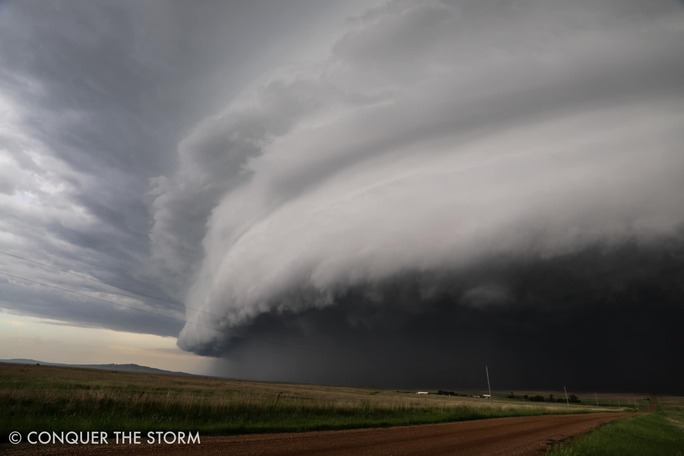Roofing Contractors Respond to Damage From Derecho

By Lauren White, RCS Reporter.
After a derecho left a path of destruction in several midwestern states, roofing companies are helping repair and replace roofs.
Derecho, meaning “straight” in Spanish, is a long-lived, powerful thunderstorm with straight-line winds that wreaks havoc on everything in its way. On August 10, 2020 a derecho developed in northern Nebraska and southeast South Dakota and then traveled east as it intensified, going through Chicago and into Indiana and Michigan. The derecho left a path of destruction across the midwest of downed trees on cars and homes, flipped semi-trailers, crumpled grain silos and flattened crops, leaving thousands without power.
Chicago residents received a warning from National Weather Service Chicago saying, “This is an extremely dangerous line of storms. When you receive the warning, treat it like a tornado warning. Head for safe shelter indoors well away from windows (interior windowless room or basement if you have one).”
A storm is classified as a derecho if the “...wind damage swath extends more than 240 miles and has wind speeds of at least 58 mph or greater along most of the length of the storm’s path,” according to the Weather Service. The August derecho had wind speeds of 110-140 mph and traveled 770 miles in 14 hours. “This is our version of a hurricane,” said Northern Illinois University meteorology professor Victor Gensini.
“What is unique about this event, making it even more extreme, is the long duration of the high winds. Many locations experienced sustained high winds and damaging gusts for 30 to 45 minutes,” the Weather Service revealed. “A derecho of this intensity is a roughly once-in-a-decade occurrence in this region. Other notable derechos occurred in 1998 and 2011.”
The high winds flattened numerous crop fields and tore open grain bins. Iowa’s corn crop is worth billions of dollars. According to Governor Kim Reynolds, it will take days or weeks to get a full assessment of the damage to the corn and soybean crops. The initial estimate is that 10 million farm acres were damaged.
Several Iowa cities reported roof damage to homes and buildings, including the Buccaneer Arena, the home of the Des Moines Buccaneers of the United States Hockey League. The junior/senior high building in Madrid Community School District was significantly damaged by the derecho, causing them to delay the start of school. “The top membrane of the junior/senior high gym roof was blown off,” said Superintendent Brian Horn to Ames Tribune. “There are multiple holes to the rest of the roof.” There are at least 300 holes that need to be patched on the roof according to an estimate from the roofing company.

Justin Sullivan, executive secretary for the Iowa Roofing Contractors Association, based in Des Moines, shared that in this situation, out-of-state roofing companies, sometimes called storm chasers, “...Can be helpful because they are filling a void maybe the local contractors cannot fill.” Association members consist mostly of roofing companies in Iowa and they were “already operating at 80 to 90 percent of capacity before the storm,” Sullivan said. Now they’re faced with thousands of roofs to fix and a shingle shortage, which makes it difficult to repair roofs quickly.
Young Construction sent crews to neighborhoods in Cedar Rapids, Iowa after the storm died down. “They helped residents put tarps over holes in their roofs and connected with people who recently had their roofs repaired to make sure they didn’t have further damage,” co-owner Tami Young shared with the Gazette. The company already had offices in Mason City and Waverly and recently opened an office in Cedar Rapids. “In 19 years of business...I’ve never seen anything like that...It was just like a hurricane,” Young said.
Joe Jelinek, the owner of Aspen Exteriors, is from Cedar Falls. While his company is based in Minnesota, they focus on storm repairs and send crews where they’re needed. “When a town like Cedar Rapids gets hit really bad, the number of roofing companies that have a brick-and-mortar store there is so minimal they’d never be able to get the work done in time before water starts leaking into people’s homes,” Jelinek told the Gazette.
Samaritan’s Purse sent two of their disaster relief units to Iowa. While there, volunteers are patching damaged roofs and helping clear yard debris. Samaritan’s Purse provides aid to victims of natural disasters in the United States, oftentimes staying after their initial response to help rebuild and restore homes for families in need.
The devastation these midwestern states are facing is substantial. With violent winds equivalent to those of a major hurricane and widespread damage more significant than a normal tornado, there’s a lot to be done to rebuild and repair the homes and buildings that were in the wake of the derecho.
Get more news and information like this delivered right to your inbox each week when you sign up for the RCS Week-in-Review e-newsletter.

















-2025-xtv-mls-tour-2.png)





Comments
Leave a Reply
Have an account? Login to leave a comment!
Sign In